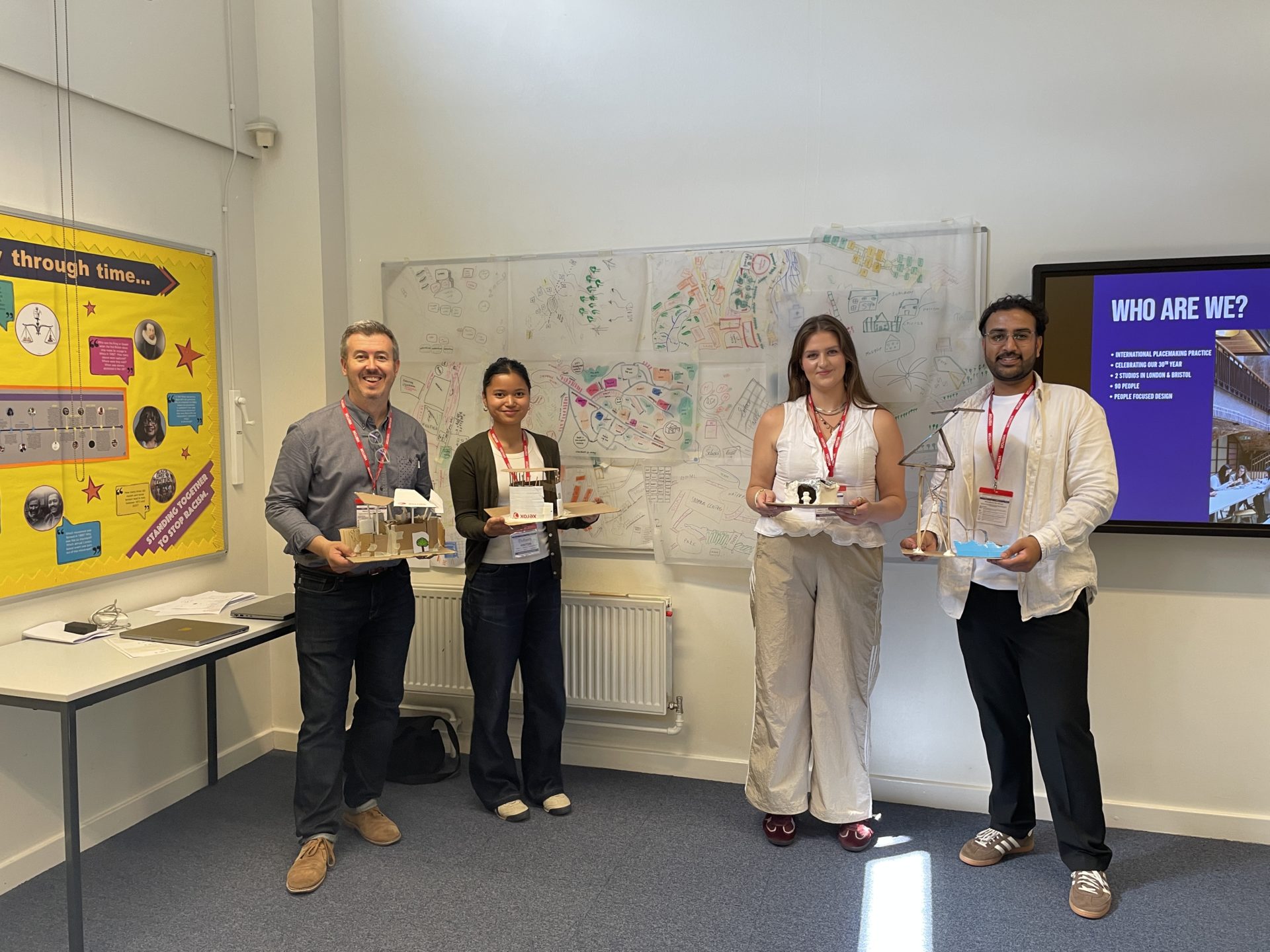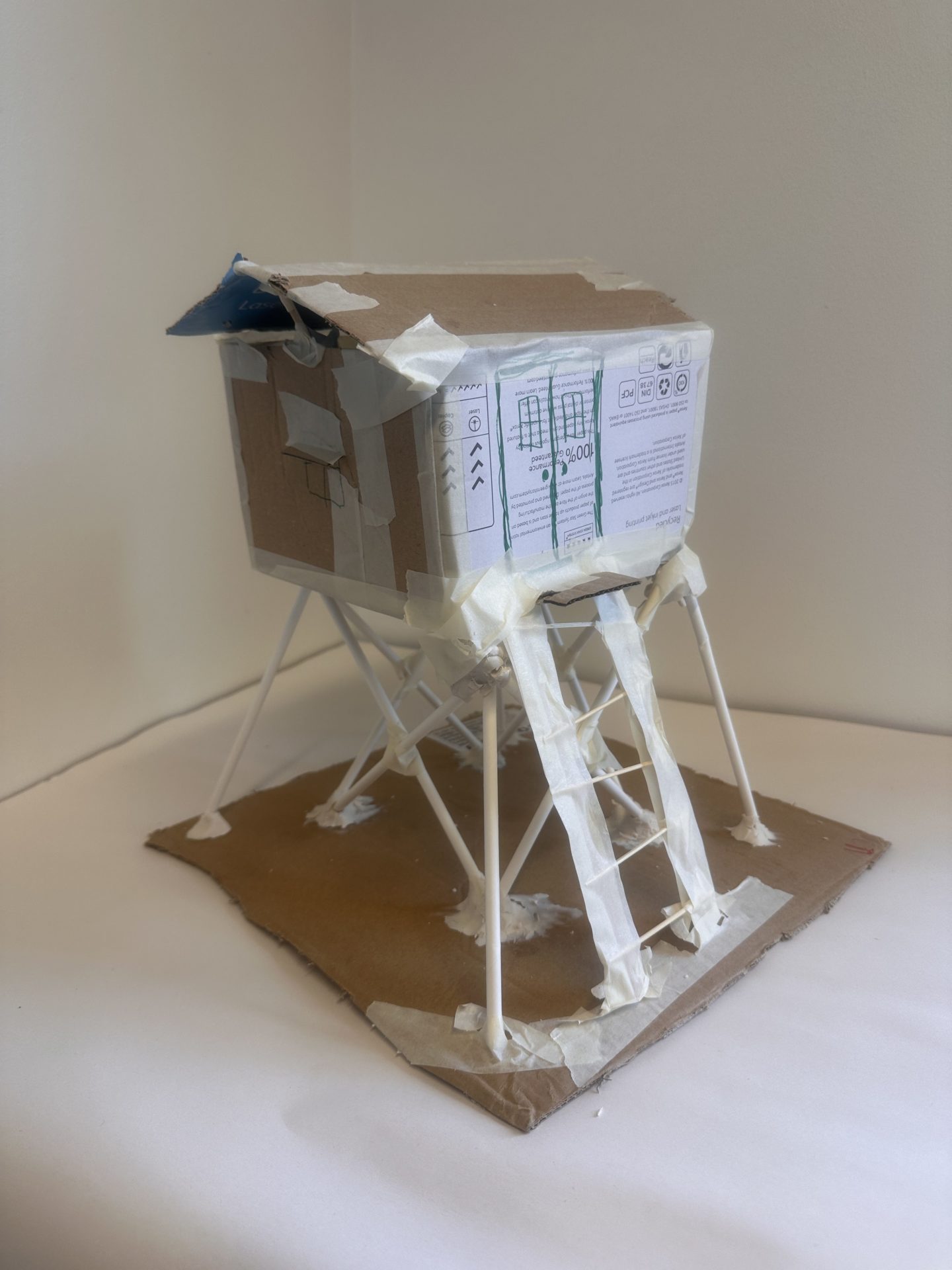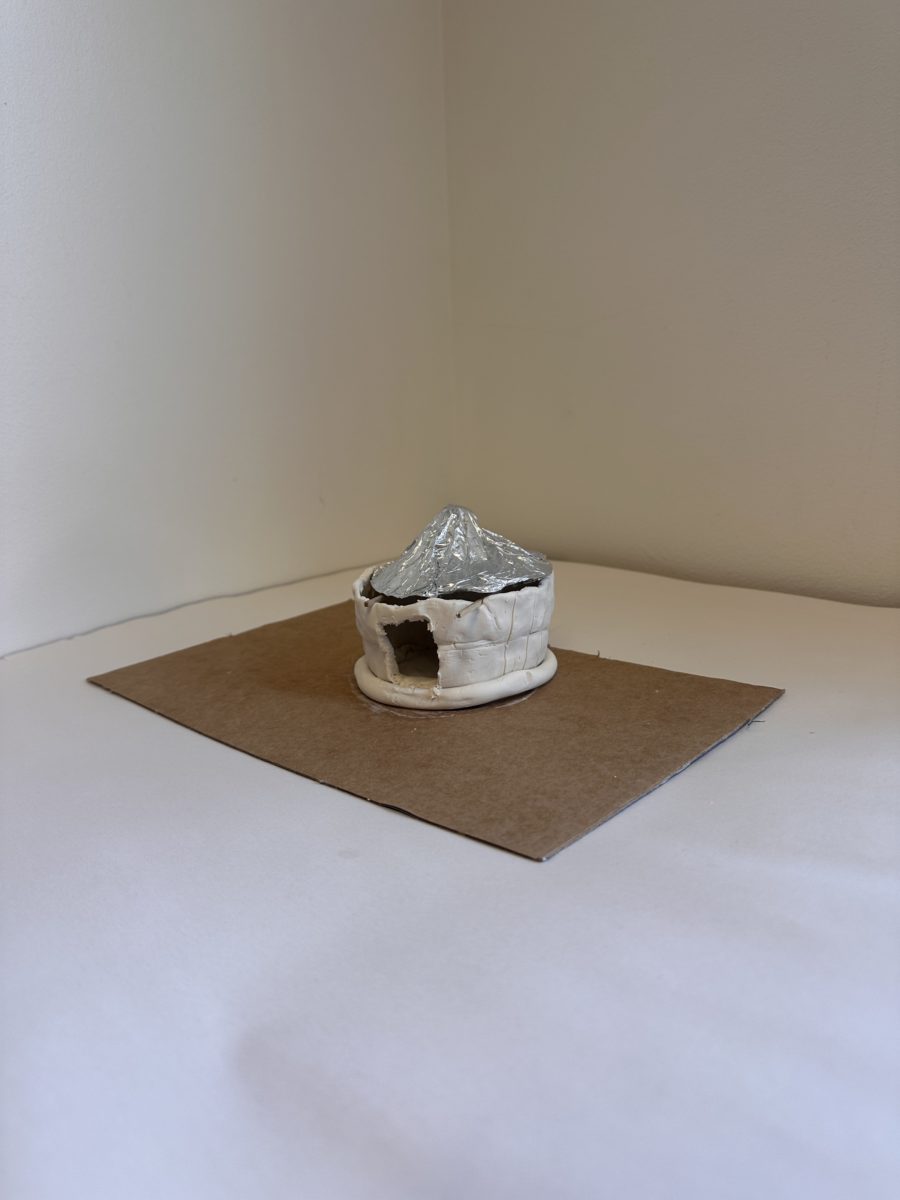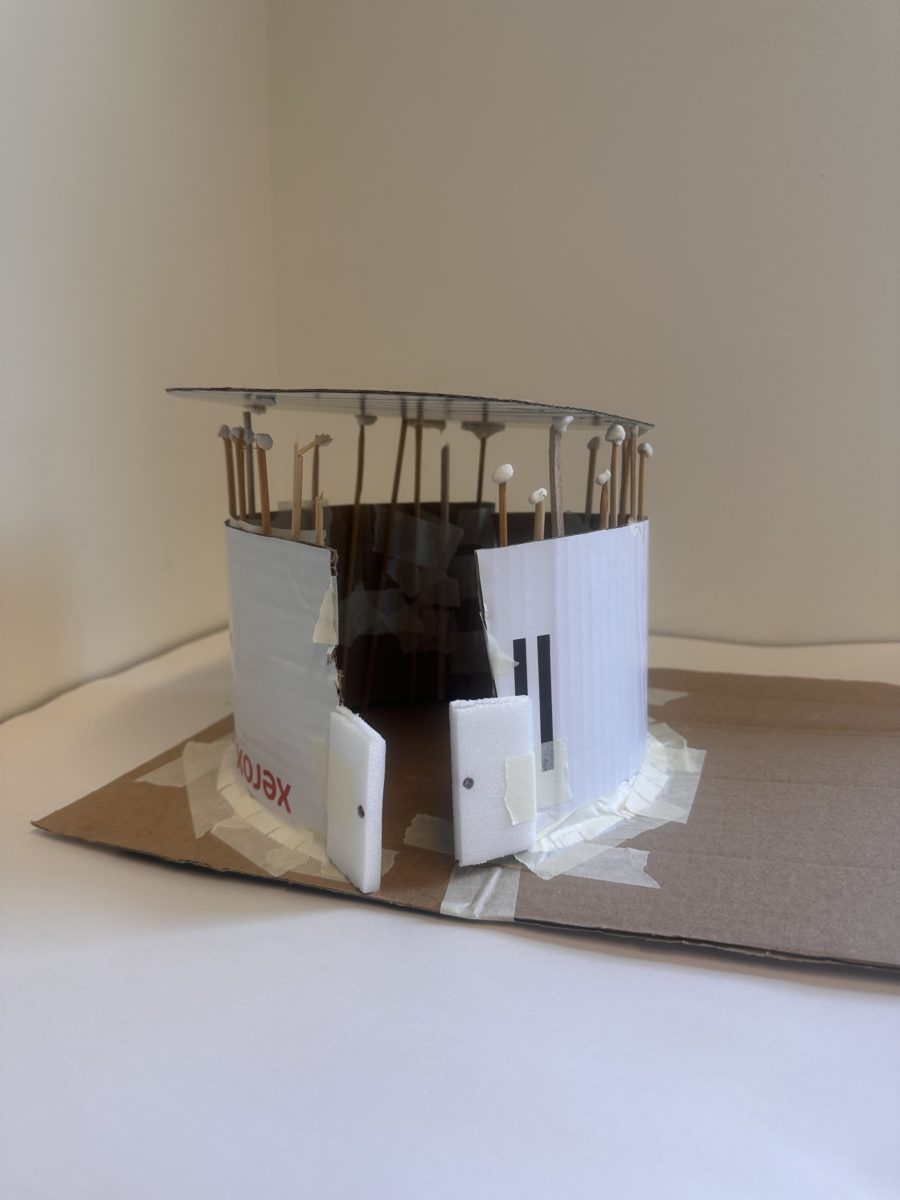Framing architecture as a powerful tool for social change, the workshop introduced students to the growing reality of environmental refugees – communities forced to relocate due to the effects of climate change. Students were asked to step into the role of designers and problem-solvers, exploring how the built environment can respond compassionately and creatively to global challenges.
Working in small teams, students tackled three critical climate scenarios: flooding, extreme heat, and high winds. Each group was tasked with designing and constructing large-scale, climate-adapted shelters using simple materials, while also developing placemaking plans – visual maps that imagined how displaced communities might live, gather, and rebuild a sense of home and belonging.




